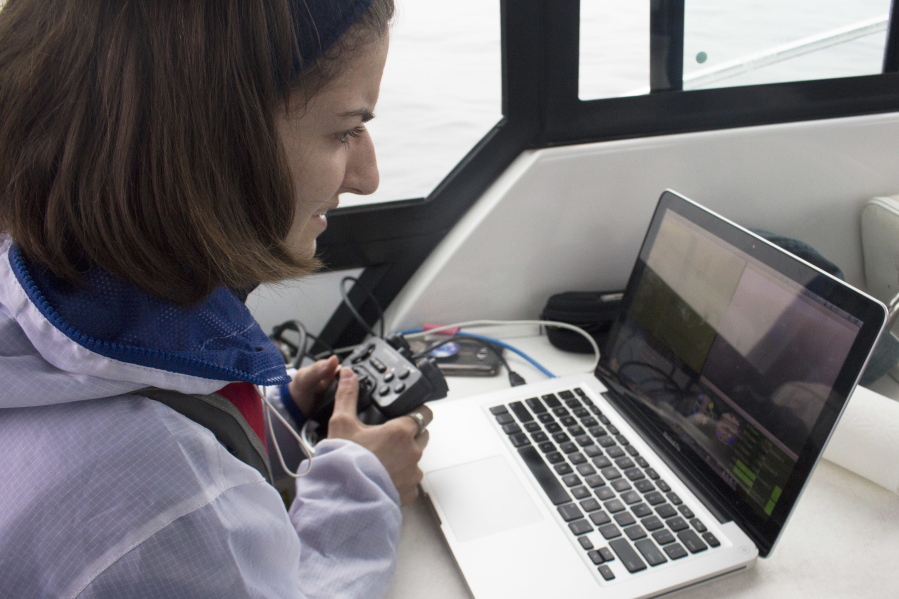ASTORIA, Ore. — The side-scan sonar on the hull of Bob Magie’s chartered catamaran Sovereign painted an image of a rocky seabed beneath the hulking mass of Neahkahnie Mountain, just south of Short Sands beach.
He and Chris Dewey, president of the Maritime Archaeological Society, looked for pieces of hull, a mast — any sign of a shipwreck they believe rests off the coast.
Sonar scans, magnetometer spikes and brief glimpses during dives have led researchers repeatedly to the rocky shores off Oswald West. Based on artifacts, historical ship records and beachcomber discoveries, the archaeological society believes the so-called “Beeswax” wreck is the Santo Cristo de Burgos, a 17th-century Spanish galleon sailing from the Philippines to Mexico.
The society was funded for a week of field operations in the ocean on Magie’s boat by a $6,600 Preserving Oregon Grant from the State Historic Preservation Office. But uncooperative sea conditions and broken magnetometers limited the researchers to two days on the sea.
On the first day, they used Magie’s sonar to gather images of the coast from Cape Falcon to Manzanita to study for possible future outings.
Instead of magnetometers, the society on the second day took out Clatsop Community College’s underwater robot, Lazarus, and robotics team CEO Jennifer Jordan, who surveyed with the submersible just north of the beach. Neither Jordan nor another survey by the society’s underwater robot uncovered any artifacts.
“We’re kind of getting close to the end of the season,” Dewey said of the worsening weather. “We may not make it back out there.”
Clues of a wreck
The legend of a shipwreck off the coast of Manzanita stretches back to the early 19th century, when a fur trader noticed Native Americans trading in beeswax despite there being no native honeybees in Oregon. To this day, beachcombers periodically find blocks of beeswax and pieces of fine china around Short Sands beach and the Nehalem Spit.
The search for the Beeswax wreck has been ongoing for more than a decade, first through the Beeswax Wreck Project and later through the archaeological society. During a search in 2013, a company scanned the area near Short Sands with a magnetometer and found a spike indicating metal, Dewey said.
During a dive with friends a year later, Dewey saw an unusual growth near the surface in the same spot.
The next step for the society is to raise funds for a working magnetometer, which Dewey said will cost about $18,000, and preparing to possibly dive next year in the areas around Short Sands. The instrument is necessary for identifying metal objects buried in the sand and underwater.
“We could find something (with sonar and robots), and it might be something very cool, but the rest of the wreck might be a foot under sand right next to it or half a mile away,” Dewey said.
Beyond Beeswax
While finding the Beeswax is the top priority, the society was formed three years ago from the Beeswax Wreck Project to expand the group’s mission and state support for identifying some of the thousands of shipwrecks throughout the region, Dewey said. The group is a collection of volunteers from throughout the Pacific Northwest and Hawaii.
State databases include more than 31,000 documented archaeological sites on land, State Archaeologist David Griffin wrote in a 2013 report on underwater archaeological research.
“Recorded shipwreck locales within this database number just over 300,” he wrote.



